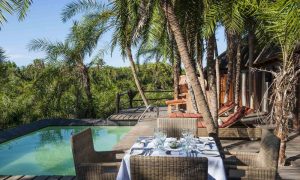Exploring the Expense: Mount Kilimanjaro Climb Cost Analysis
Mount Kilimanjaro, the highest peak in Africa, is a bucket-list destination for many adventure enthusiasts. However, the cost of climbing this iconic mountain can vary significantly depending on various factors. In this article, we will delve into the expense of undertaking a Mount Kilimanjaro climb, examining the cost breakdown and the factors that influence these costs.
Understanding the Cost Breakdown
When considering the cost of climbing Mount Kilimanjaro, it is essential to understand the breakdown of expenses involved. The tour package organized by Sunset Africa Safari typically includes the following components:
-
Park Fees: One of the significant expenses associated with climbing Mount Kilimanjaro is the park fees. These fees are charged by the Kilimanjaro National Park authorities and vary depending on the route chosen for the climb and the number of days spent on the mountain.
-
Guide and Porter Fees: Hiring experienced guides and porters is crucial for a successful Kilimanjaro climb. These individuals play a vital role in ensuring the safety and well-being of climbers throughout the journey. The fees for guides and porters are typically included in the tour package.
-
Accommodation: Accommodation during the climb usually consists of tents or mountain huts along the route. The cost of accommodation is included in the tour package and may vary depending on the level of comfort and facilities provided.
-
Meals: Climbers are provided with meals during the trek, including breakfast, lunch, and dinner. Special dietary requirements can be accommodated, but additional charges may apply.
-
Equipment Rental: Climbers may choose to rent equipment such as sleeping bags, trekking poles, and warm clothing. The cost of equipment rental is usually not included in the tour package and should be budgeted for separately.
-
Transportation: The cost of transportation to and from the starting point of the climb is another expense to consider. This may include airport transfers, shuttle services, or private transport, depending on the tour operator.
-
Miscellaneous Expenses: Additional expenses such as travel insurance, visa fees, tips for guides and porters, and personal expenses should also be factored into the overall cost of the climb.
Factors Influencing Mount Kilimanjaro Climb Costs
Several factors can influence the cost of climbing Mount Kilimanjaro:
-
Route and Duration: The choice of route and the number of days spent on the mountain can significantly impact the cost of the climb. Longer routes and extended durations may incur higher park fees, guide fees, and accommodation costs.
-
Group Size: The cost per person may vary depending on the size of the group. Larger groups may benefit from discounted rates, while smaller groups or solo climbers may incur higher costs.
-
Season: The cost of climbing Mount Kilimanjaro may vary depending on the time of year. Peak seasons, such as the dry season from June to October, may attract higher prices due to increased demand.
-
Tour Operator: The choice of tour operator can also influence the cost of the climb. It is essential to select a reputable operator like Sunset Africa Safari, known for their experienced guides, quality services, and competitive pricing.
In conclusion, climbing Mount Kilimanjaro is a memorable and rewarding experience, but it is essential to consider the expenses involved when planning for the adventure. By understanding the cost breakdown and the factors that influence climb costs, climbers can make informed decisions and budget accordingly. For booking inquiries and more information on Mount Kilimanjaro climbs, interested clients can contact Sunset Africa Safari at info@sunsetafricasafari.com.


